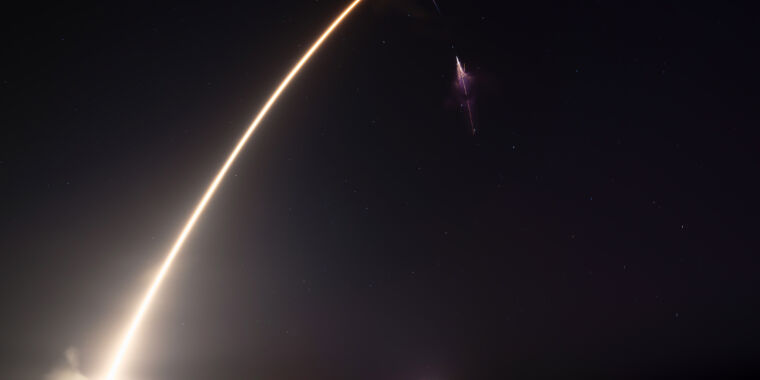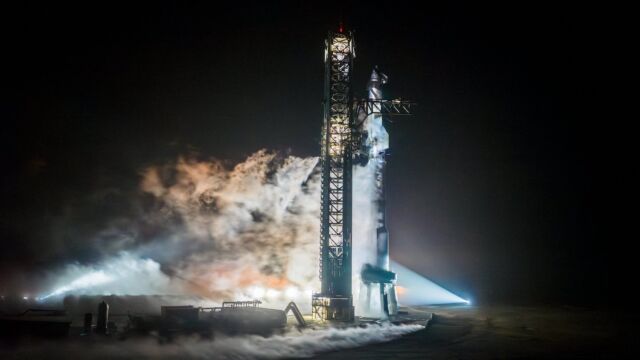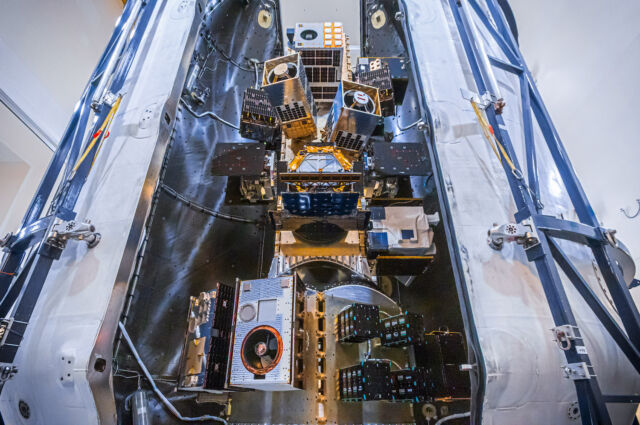SpaceX just showed us what every day could be like in spaceflight


Between Sunday night and Monday night, SpaceX teams in Texas, Florida, and California supervised three Falcon 9 rocket launches and completed a full dress rehearsal ahead of the next flight of the company’s giant Starship launch vehicle.
This was a remarkable sequence of events, even for SpaceX, which has launched a mission at an average rate of once every three days since the start of the year. We’ve reported on this before, but it’s worth reinforcing that no launch provider, commercial or government, has ever operated at this cadence.
SpaceX has previously had rockets on all four of its active launch pads. But what SpaceX accomplished over a 24-hour period was noteworthy. Engineers inside at least four control centers were actively overseeing spacecraft and rocket operations simultaneously.
The sprawl of SpaceX
On Sunday night at the Starbase facility in South Texas, teams loaded more than 10 million pounds of methane and liquid oxygen propellants into the nearly 400-foot-tall (121-meter) Starship rocket slated to lift off as soon as this month on the third full-scale test flight of SpaceX’s next-generation launcher.
This was likely the final major test before SpaceX launches the third Starship test flight. The countdown rehearsal of the fully stacked rocket ended as planned at T-minus 10 seconds, just before the booster’s Raptor engines were ignited; SpaceX then drained the vehicle of propellant. SpaceX previously test-fired the Super Heavy booster and Starship upper stage separately.
The schedule for the next Starship launch hinges on approval from the Federal Aviation Administration, which is reviewing SpaceX’s actions to correct the malfunctions that occurred on the second Starship test flight in November. Last week, the FAA announced it closed its investigation into the second Starship test flight, which was largely successful in demonstrating significant progress on SpaceX’s privately funded rocket program. But the test flight ended with explosions of the Super Heavy booster and Starship upper stage, prompting an FAA investigation.
On the next Starship flight, SpaceX wants to perform some early-stage testing of the in-space refueling technology it will need for later Starship flights, such as missions to the Moon for NASA.

At the same time SpaceX’s team in Texas managed the Starship countdown rehearsal, another group of engineers and technicians on Florida’s Space Coast stepped through a Falcon 9 launch countdown Sunday night. Three NASA astronauts and one Russian cosmonaut strapped into their seats on SpaceX’s Crew Dragon Endeavour spacecraft on top of the Falcon 9 rocket, then waited for liftoff from Launch Complex 39A at NASA’s Kennedy Space Center at 10:53 pm EST Sunday (03:53 UTC Monday).
The Falcon 9 launch of NASA’s Crew-8 mission Sunday night was the first of three Falcon 9 launches over the next 20 hours. Next in line was a launch at 5:05 pm EST (2205 UTC) Monday from Vandenberg Space Force Base in California with 53 small payloads on SpaceX’s 10th Transporter rideshare mission. The customer payloads on this Falcon 9 launch included MethaneSAT, an $88 million satellite funded primarily by philanthropic donations to monitor methane greenhouse gas missions around the world.
Then, less than two hours later, at 6:56 pm EST (2356 UTC), a Falcon 9 rocket took off from SpaceX’s most active launch pad at Cape Canaveral Space Force Station in Florida. This mission delivered 23 more Starlink broadband satellites into orbit for SpaceX’s commercial Internet network. At 1 hour and 51 minutes, this was the shortest time separation to date between two SpaceX launches.
All three Falcon 9 launches ended with landings of the rockets’ first stage boosters.

While controllers at Starbase, Cape Canaveral, and Vandenberg looked after these three Falcon 9 launches, SpaceX engineers at the company’s headquarters near Los Angeles tracked the performance and progress of the Crew Dragon Endeavour spacecraft on its way to the International Space Station, where it docked early Tuesday. Next week, another SpaceX capsule, Crew Dragon Endurance, will depart the station to bring a different four-person crew back to Earth.
SpaceX, which now has more than 13,000 employees, pulled off a similar rapid-fire launch cadence in mid-February with three Falcon 9 launches in approximately 23 hours, but this time included the additional complexity of operating a Dragon crew capsule en route to the ISS, plus the Starship countdown in Texas. While all this was going on, a handful of ground controllers also monitored the health of the Dragon spacecraft currently docked at the space station.
Source link




